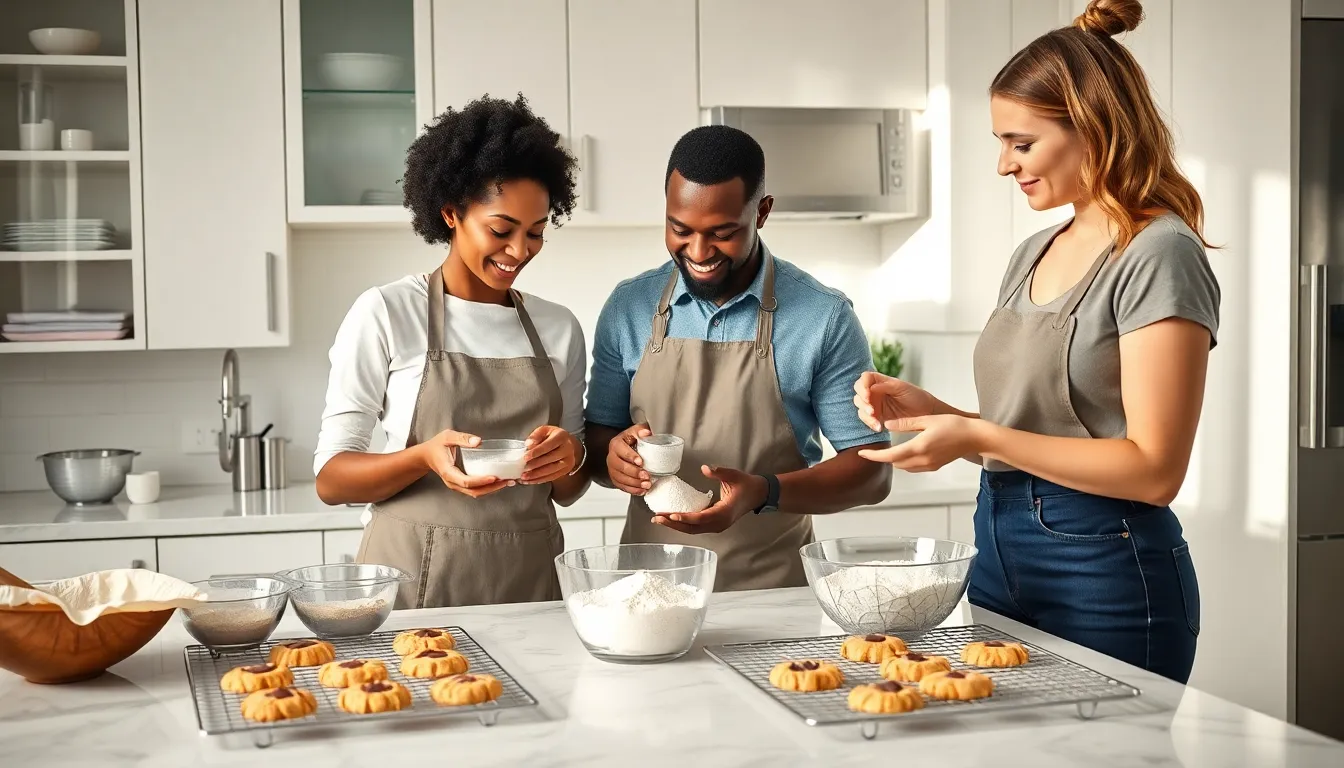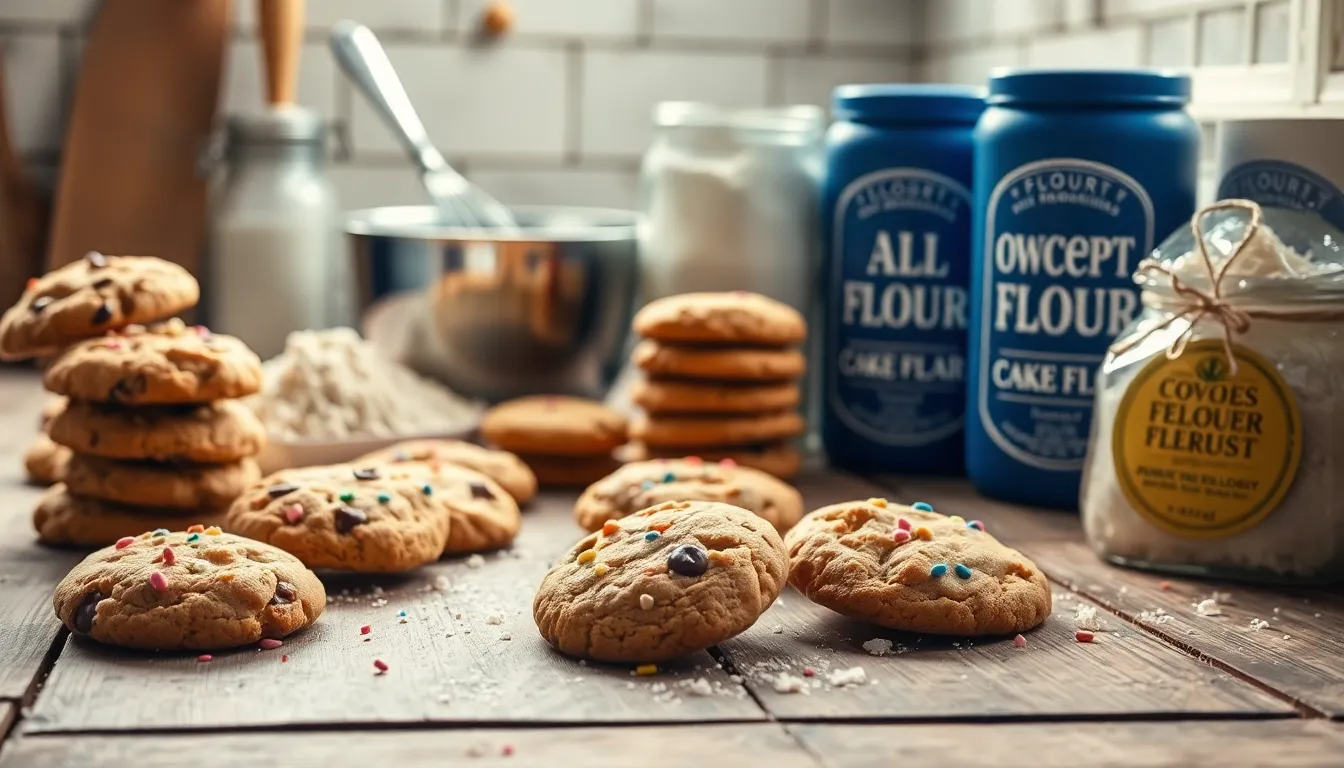Imagine biting into a warm, gooey cookie straight from the oven. The kind that hugs your taste buds and makes you feel like a kid again. Now, wouldn’t you want to master that heavenly treat? Welcome to the world of cookie baking where flour reigns supreme, and all your dreams of the perfect cookie can come true. In this delightful journey, we’ll uncover secrets, sprinkle some humor, and transform your kitchen into a cookie wonderland, even if your cooking skills stop at reheating pizza.
Table of Contents
ToggleThe Art of Cookie Baking

Baking cookies might seem straightforward, mix, scoop, bake, and devour. Yet, there’s an art to it that goes far beyond mere measurements. Each ingredient plays a pivotal role in the texture and taste of your final creation. Understanding flour’s unique characteristics is the first step toward cookie mastery.
Understanding Different Types of Flour
Different flours possess unique properties, giving cookies a range of textures, from chewy to crispy. All-purpose flour is the MVP in cookie making. Versatile and reliable, it’s the go-to option for most bakers. But, if a cookie enthusiast craves specific textures, specialty flours like bread flour or cake flour can elevate the experience. Bread flour, with its higher protein content, contributes to a chewier bite, while cake flour offers a tender crumb, ideal for those melt-in-your-mouth moments.
Choosing the Right Flour for Your Cookies
When selecting flour, considering the desired outcome is vital. Want chewy chocolate chip cookies? All-purpose flour will do just fine. Planning on delicate royal icing cookies to impress your guests? Cake flour is the secret weapon. And for a twist that will make people swoon, experimenting with gluten-free flours can open new avenues. Oat flour or almond flour could reveal delightful surprises, catering to various dietary preferences while still delivering on flavor.
Essential Ingredients for Perfect Cookies
Flour might be the leading lady in your cookie baking saga, but it’s not alone. Sugar, butter, eggs, and flavorings bring the ensemble cast to life. Granulated sugar adds sweetness and helps create a crispy exterior, while brown sugar enhances moisture and yields a chewy texture. The ratio of these sugars can dramatically impact the cookie’s final character.
Butter plays a starring role as well. Room temperature butter adds richness, while melted butter can produce delightful, slightly denser cookies. Eggs bind everything together, and they also serve as a leavening agent in some recipes. Don’t skimp on flavorings. Pure vanilla extract or a pinch of cinnamon can make a world of difference in elevating your cookies from “meh” to magnificent.
Techniques to Enhance Cookie Flavor
Now that we have our ingredients lined up, let’s discuss some techniques to enhance flavor. Techniques can distinguish a good cookie from an unforgettable one.
Decorating Cookies: Creative Ideas
Decorating cookies is where creativity flourishes. From royal icing masterpieces to simple sprinkles, the options are endless. Introducing a fun decorating station at your next gathering could unleash hidden talents. Grab some food coloring and edible glitter for a whimsical touch. But plain cookies also deserve attention. A dusting of sea salt on top not only looks beautiful, but it also enhances the cookie’s flavor.
Storing and Preserving Cookies
After all that hard work baking the perfect cookies, the last thing anyone wants is for them to go stale. Proper storage is crucial. First, ensure the cookies have cooled completely before packing them up, warm cookies can create moisture and lead to sogginess.
Using airtight containers is a game changer. If you’ve made a large batch, consider freezing. Layer wax paper between the cookies to maintain their shape and taste. When you return to your frozen stockpile, they’ll be as fresh as the day they were baked, perfect for spontaneous treat cravings.





